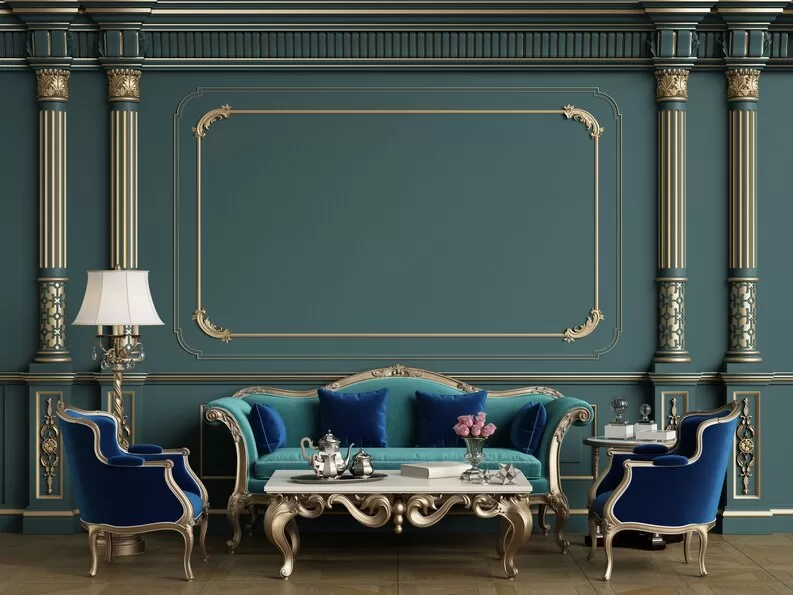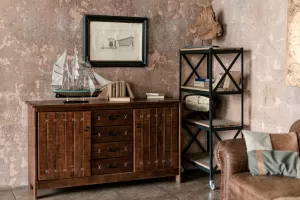I. Introduction
The world of interior design is ever-evolving, with trends coming and going, driven by evolving tastes and changing lifestyles. However, amidst the ever-changing landscape, traditional furniture has stood the test of time, maintaining its timeless appeal. It exudes a sense of elegance, sophistication, and a connection to the past that resonates with many individuals seeking to create warm and inviting spaces.
In this article, we will delve into the origins and key features of traditional furniture, understand its historical roots, explore its distinct characteristics, and discover popular styles. By gaining insight into the historical influences and craftsmanship that define traditional furniture, we can appreciate the artistry behind each piece and the enduring allure it brings to any interior.
Traditional furniture reflects a rich tapestry of historical periods, with each era leaving its indelible mark on the development of distinct styles. From ancient civilizations to the Renaissance and beyond, the evolution of traditional furniture is a testament to the enduring power of timeless design.
Beyond its historical origins, traditional furniture is characterized by key features that contribute to its timeless appeal. The use of wood as the primary material not only brings a natural warmth to these pieces but also showcases the beauty of grain patterns and finishes. Meticulous craftsmanship and intricate detailing, often done by hand, create exquisite carvings, ornate moldings, and precise joinery techniques that elevate traditional furniture to a level of artistry.
The silhouettes and forms of traditional furniture strike a balance between form and function. Classic shapes and proportions are carefully crafted to create harmonious compositions. Curves and scrolls add a touch of grace and fluidity, while clean lines and balanced proportions create a sense of visual stability and timeless elegance.
Ornamentation and embellishments are hallmarks of traditional furniture, adding depth and character to the designs. Elaborate carvings, moldings, and inlays showcase the intricate workmanship and attention to detail that defines these pieces. Upholstery and fabrics further enhance the allure of traditional furniture, with rich, textured fabrics and sophisticated details such as button tufting and nailhead trim adding a luxurious touch.
Throughout history, various styles of traditional furniture have emerged and gained popularity. From English Traditional with its Queen Anne and Georgian styles to French Traditional with the opulence of Louis XIV and the romantic elegance of Louis XV, each style carries its own distinctive characteristics and historical influences. American Traditional, including Colonial and Shaker styles, showcases unique interpretations of traditional design within the American context.
While traditional furniture has strong ties to history, it can also find its place in modern interiors. By blending traditional and contemporary elements, a captivating juxtaposition can be created, allowing these timeless pieces to shine while adding depth and character to the overall aesthetic. With thoughtful integration, traditional furniture can enrich a variety of interior styles, from modern to eclectic, creating spaces that evoke a sense of timeless elegance and sophistication.
Caring for and maintaining traditional furniture is essential to preserve its beauty and longevity. By following proper cleaning, polishing, and protection techniques, these pieces can be cherished for generations to come. Understanding how to care for traditional furniture ensures that its timeless allure remains intact and that its value endures.
In conclusion, traditional furniture carries a timeless appeal that transcends fleeting trends. Its historical roots, meticulous craftsmanship, and distinct features contribute to its exceptional allure, making it a cherished choice for those who seek to create spaces that exude warmth, elegance, and a connection to the past. By exploring the origins and key features of traditional furniture, we can gain a deeper appreciation for the artistry and craftsmanship behind each piece, and invite the enduring beauty of traditional furniture into our homes.
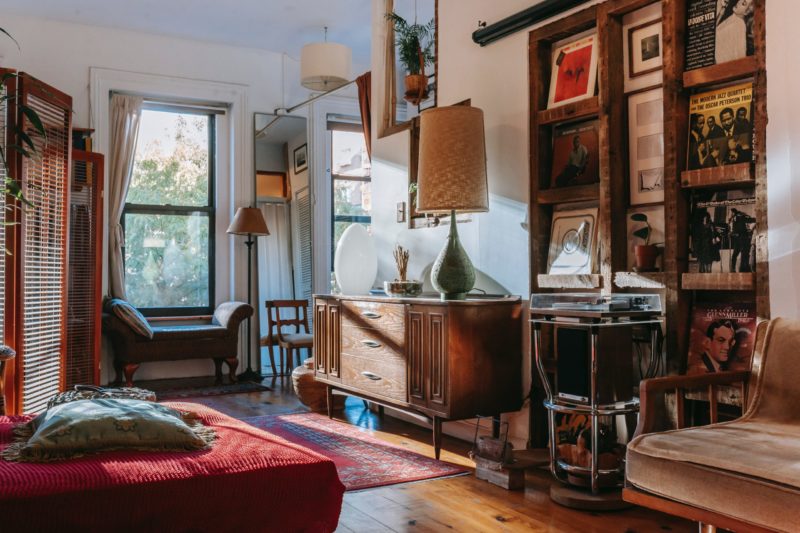
II. The Historical Roots of Traditional Furniture
Tracing the origins of traditional furniture takes us on a captivating journey through history, where various historical periods have influenced the development of distinct styles that continue to shape traditional furniture today. Exploring the roots of traditional furniture allows us to gain a deeper appreciation for its rich heritage and enduring appeal.
A. Ancient and Classical Influences
The origins of traditional furniture can be traced back to ancient civilizations, where the artistry of furniture-making first began. Ancient Egyptian furniture, dating back thousands of years, showcased an emphasis on simplicity, practicality, and symbolism. Egyptian artisans crafted furniture using materials like wood, reeds, and woven fibers, creating pieces that served both functional and ceremonial purposes. Ornate carvings, hieroglyphics, and symbolic motifs adorned these ancient pieces, showcasing the mastery of craftsmanship.
The influence of ancient Greece and Rome also played a significant role in shaping traditional furniture. Greek furniture, known for its elegance and symmetry, featured refined designs with delicate curves and intricate details. Greek craftsmen used materials such as marble, bronze, and wood, often embellished with decorative motifs and inlays. Roman furniture, influenced by both Greek and Etruscan styles, displayed opulence and grandeur. Roman pieces boasted intricate carvings, gilded accents, and luxurious materials, reflecting the wealth and power of the Roman Empire.
B. Medieval and Renaissance Influences
The Middle Ages marked a significant shift in the style and craftsmanship of furniture. Influenced by Gothic architecture and art, medieval furniture showcased intricate carvings and attention to detail. Large, sturdy pieces such as thrones and chests were adorned with motifs inspired by religious symbolism and nature. Gothic furniture often featured pointed arches, quatrefoils, and tracery patterns, evoking a sense of grandeur and spirituality.
The Renaissance period brought about a rebirth of art, culture, and design. Renaissance furniture reflected the ideals of the time, emphasizing balance, proportion, and harmony. Inspired by classical Roman and Greek styles, Renaissance furniture embraced architectural elements and classical motifs. Elaborate carvings, ornamental inlays, and richly painted details adorned these pieces, showcasing the skill of Italian craftsmen. The popularity of the printing press during this period allowed designs to be disseminated more widely, influencing furniture styles across Europe.
C. Baroque and Rococo Influences
The Baroque and Rococo periods, known for their indulgence and extravagance, left a lasting impact on traditional furniture. Baroque furniture, which emerged in the 17th century, featured bold, dramatic designs characterized by ornate carvings, curvaceous forms, and richly gilded finishes. Grandiose pieces such as cabinets, beds, and dining tables showcased intricate detailing, including scrolls, acanthus leaves, and mythological motifs. Baroque furniture epitomized the opulence and power of the monarchies and aristocracy of the time.
The Rococo period, which followed the Baroque, introduced a lighter and more playful style. Rococo furniture embraced delicate forms, asymmetry, and organic motifs inspired by nature. Flowing curves, ornamental shells, and graceful scrolls became signature elements of Rococo design. French craftsmen excelled in creating intricate marquetry, where small pieces of veneer were meticulously arranged to form decorative patterns and scenes.
D. Neoclassical and Federal Influences
As the 18th century progressed, there was a shift towards a more restrained and classical aesthetic. Neoclassical furniture emerged as a reaction against the excesses of the Rococo style. Inspired by the archaeological discoveries of ancient Greece and Rome, Neoclassical furniture sought to revive the ideals of classical antiquity. Clean lines, geometric forms, and symmetry became the defining characteristics of Neoclassical design. Classical motifs such as columns, urns, and laurel wreaths adorned furniture, showcasing a return to simplicity and proportion.
In the United States, the Federal style emerged during the late 18th century and early 19th century. Federal furniture drew inspiration from both Neoclassical and Georgian styles, blending European influences with American craftsmanship. Federal pieces featured delicate details such as inlay work, bellflowers, and swags. Motifs inspired by American patriotism, such as eagles and stars, often adorned these pieces, reflecting the spirit of the newly formed nation.
E. Victorian and Edwardian Influences
The Victorian era, spanning from the mid-19th century to the early 20th century, marked a period of ornate extravagance in furniture design. Victorian furniture displayed a fascination with historical revivalism, drawing inspiration from various styles such as Gothic, Renaissance, and Rococo. Elaborate carvings, richly upholstered seating, and heavily ornamented pieces were prevalent during this time. The Victorian aesthetic embodied a desire for opulence, showcasing the wealth and status of the era’s upper classes.
In the early 20th century, the Edwardian era succeeded the Victorian period, introducing a shift towards lighter and more delicate designs. Edwardian furniture embraced influences from French Rococo and Neoclassical styles. The pieces became more refined, with slender legs, intricate marquetry, and elegant inlays. Lighter woods and pastel-colored upholstery were also popular during this time, reflecting a desire for a more airy and feminine aesthetic.
By understanding the historical influences and periods that have shaped traditional furniture, we can gain a deeper appreciation for the craftsmanship, artistry, and cultural contexts that give these pieces their enduring allure. Traditional furniture not only embodies the aesthetics of its time but also serves as a tangible link to the past, enriching our homes with a sense of history, charm, and timeless beauty.


III. Key Characteristics of Traditional Furniture
Traditional furniture is defined by a set of key characteristics that contribute to its timeless appeal. From the materials used to the intricate details and ornamentation, these elements create pieces that exude elegance, craftsmanship and a sense of history.
A. Materials and Construction Techniques
1. Wood as the Primary Material:
Traditional furniture embraces the warmth and natural beauty of wood. It is often crafted from hardwoods such as oak, mahogany, cherry, or walnut. These woods possess inherent durability and richness, allowing them to age gracefully over time. The natural grain patterns and unique markings of the wood enhance the visual appeal of traditional furniture, creating a sense of depth and character.
2. Handcrafted Details and Joinery:
At the heart of traditional furniture lies the artistry of handcrafted details and joinery. Skilled craftsmen dedicate countless hours to meticulously carving, shaping, and refining each piece. Whether it’s ornate carvings on a cabinet or delicate detailing on a chair’s legs, these handcrafted elements showcase the craftsmanship and attention to detail that defines traditional furniture. Joinery techniques such as dovetail, mortise and tenon, and tongue and groove provide structural integrity and add to the longevity of these pieces.
B. Silhouettes and Forms
1. Classic Shapes and Proportions:
Traditional furniture exhibits classic shapes and proportions that have stood the test of time. The emphasis is on creating pieces with balanced and harmonious proportions, ensuring both visual appeal and functional comfort. From the graceful curves of cabriole legs to the clean lines of Sheraton-style furniture, traditional designs exude a sense of timelessness and elegance.
2. Curves and Scrolls:
Curves and scrolls are signature elements of traditional furniture that add a touch of grace and sophistication. These organic shapes can be found in the rounded arms of a Chesterfield sofa, the intricately scrolled details of a mirror frame, or the graceful lines of a bombe chest. The allure of curves and scrolls lies in their ability to soften the overall form and create a sense of fluidity and movement.
C. Ornamentation and Embellishments
1. Carvings and Moldings:
Traditional furniture embraces elaborate carvings and moldings as a means of elevating aesthetics. Intricate floral motifs, acanthus leaves, or intricate scrollwork can be found adorning the surfaces of cabinets, bed frames, and tables. These decorative elements showcase the skill and artistry of the craftsmen, adding depth and visual interest to the furniture.
2. Inlays and Marquetry:
The art of precision, inlays, and marquetry, involves intricately arranging pieces of contrasting wood veneers or other materials to create decorative patterns or pictorial scenes. Traditional furniture often features exquisite inlays and marquetry, showcasing the mastery of the craftsman. These decorative accents can be found on tabletops, drawer fronts, or even entire surfaces, adding a level of sophistication and artistry to the piece.
D. Upholstery and Fabrics
1. Rich and Textured Fabrics:
Upholstered traditional furniture is often adorned with rich and textured fabrics, adding a luxurious and tactile element to the design. Fabrics like velvet, brocade, or damask are commonly used to create an inviting and sumptuous look. The texture of these fabrics adds depth and visual interest to seating pieces, making them both visually appealing and comfortable.
2. Button Tufting and Nailhead Trim:
Traditional upholstery often features sophisticated details such as button tufting and Nailhead trim. Button tufting involves creating dimples or tufts by pulling the thread through layers of padding and fabric, creating a distinctive and classic look. Nailhead trim applied along the edges or seams, adds a touch of refinement and elegance. These details not only enhance the aesthetics but also reflect the meticulous attention to detail that is synonymous with traditional furniture.
Incorporating these key characteristics, traditional furniture captures the essence of timeless design, showcasing the artistry and craftsmanship that have been passed down through generations. Whether it’s the intricate carvings, the graceful curves, or the sumptuous upholstery, these elements contribute to the enduring allure of traditional furniture, creating pieces that transcend fleeting trends and become cherished heirlooms.
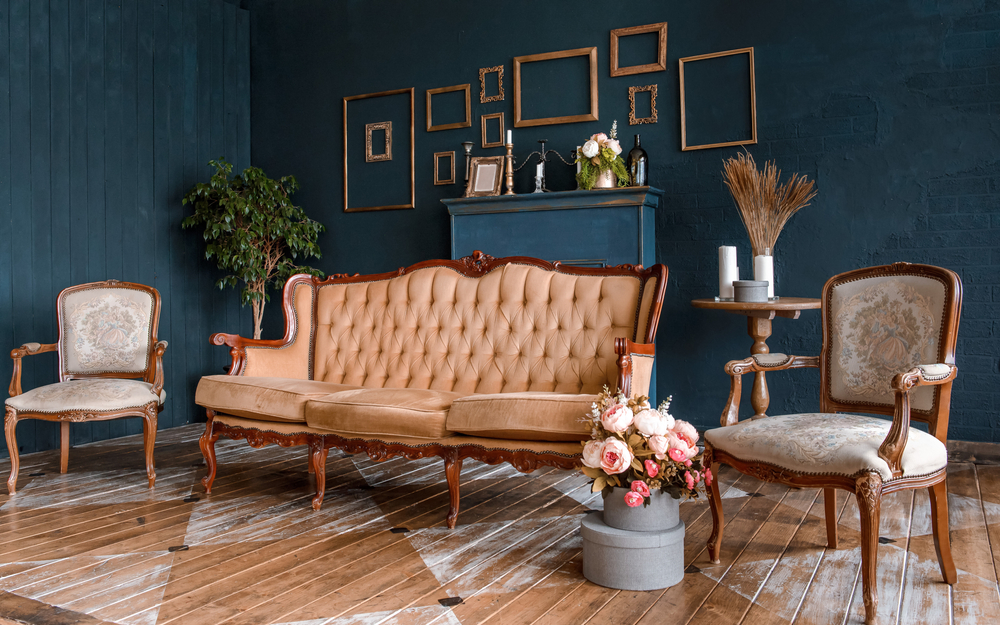

IV. Popular Styles of Traditional Furniture
Traditional furniture encompasses a wide range of styles, each with its own distinct characteristics and influences. Let’s explore some of the most popular styles of traditional furniture and discover the unique elements that define them.
A. English Traditional
1. Queen Anne Style:
The Queen Anne style, prevalent in the early 18th century, is known for its elegance and simplicity. This style showcases graceful curves, cabriole legs, and refined proportions. Chairs and tables feature curved backrests, often with a shell or fan motif, while case pieces exhibit curved front panels. The Queen Anne style represents a departure from the heavy ornamentation of earlier styles, favoring clean lines and graceful curves.
2. Georgian Style:
The Georgian style emerged during the 18th century and is characterized by timeless grace and classical influences. This style reflects the elegance and refinement of the Georgian era. Georgian furniture features straight lines, symmetrical designs, and classical motifs such as urns, swags, and neoclassical columns. Mahogany wood, known for its rich reddish-brown hue, was often used, showcasing the craftsmanship and attention to detail that defined this era.
B. French Traditional
1. Louis XIV Style:
The Louis XIV style, also known as the Baroque style, flourished during the 17th century, reflecting opulence and grandeur. Inspired by the artistic tastes of King Louis XIV, this style features extravagant designs characterized by robust forms, bold curves, and ornate carvings. Furniture of this style often showcases gilded accents, marquetry, and richly upholstered seating. The Louis XIV style represents the pinnacle of French craftsmanship and exemplifies the grandeur of the French court.
2. Louis XV Style:
The Louis XV style, emerging during the 18th century, embraces romantic elegance and delicate aesthetics. This style is characterized by curvaceous forms, asymmetrical shapes, and intricate Rococo-inspired ornamentation. Louis XV furniture showcases gracefully curved cabriole legs, intricate marquetry, and motifs such as shells, flowers, and foliage. Lighter woods, such as beech and walnut, were often used, creating an airy and ethereal ambiance.
C. American Traditional
1. Colonial Style:
The Colonial style represents the furniture design prevalent in the American colonies from the 17th to the 18th century. This style draws inspiration from European influences, particularly English, Dutch, and Spanish designs. Colonial furniture is characterized by its simplicity, functionality, and historical charm. Pieces often feature straight lines, sturdy construction, and natural finishes. The Colonial style showcases the craftsmanship of early American settlers and reflects the practical needs of the time.
2. Shaker Style:
The Shaker style, developed by the Shaker religious community in the 18th and 19th centuries, embraces minimalist simplicity and functional design. Shaker furniture emphasizes clean lines, unadorned surfaces, and exceptional craftsmanship. This style showcases the beauty of natural wood, often using woods like maple, cherry, and pine. Shaker furniture exhibits fine joinery techniques, such as dovetail and mortise, and tenon, which enhance its durability and longevity. The Shaker style embodies a commitment to simplicity, functionality, and honest craftsmanship.
These popular styles of traditional furniture exemplify the diverse influences, craftsmanship, and aesthetics that have shaped traditional design over the centuries. From the elegant simplicity of Queen Anne and Georgian styles to the opulence of the Louis XIV and romantic elegance of the Louis XV style, as well as the historical charm of the Colonial and minimalist simplicity of the Shaker style, each style offers a unique expression of traditional craftsmanship and design philosophy. Whether you prefer the refined lines of English Traditional or the ornate details of French Traditional, traditional furniture styles provide a timeless and sophisticated ambiance to any interior space.


V. Integrating Traditional Furniture into Modern Interiors
While traditional furniture is often associated with historical or vintage-themed interiors, it can also find its place in modern spaces, creating a captivating juxtaposition between the old and the new. Integrating traditional furniture into a contemporary setting requires thoughtful design choices to achieve a harmonious and cohesive look. Here are some tips for successfully blending traditional furniture into modern interiors:
A. Balancing Traditional and Contemporary Elements
Harmonizing the old and the new is key to successfully integrating traditional furniture into modern spaces. Balance is essential to avoid a conflicting look and create a harmonious composition. Consider the following tips:
1. Mix Styles:
Pair traditional furniture with contemporary pieces to create an eclectic look. For example, place a sleek and modern sofa alongside a traditional coffee table or incorporate a statement of modern artwork above a traditional sideboard. This juxtaposition of styles adds visual interest and depth to the space.
2. Scale and Proportion:
Ensure that the scale and proportion of the traditional furniture pieces align with the overall dimensions of the room and other contemporary elements. Avoid overpowering the space with large and ornate traditional pieces that may feel out of place. Instead, choose pieces that fit seamlessly within the proportions of the room.
3. Color and Finish:
Pay attention to the color palette and finishes. Opt for neutral or complementary colors that bridge the gap between the traditional and contemporary elements. This can be achieved through upholstery, accessories, or wall colors. Additionally, consider blending finishes, such as mixing a modern metal and glass side table with a traditional wooden coffee table.
B. Accessorizing with Traditional Accents
Enhancing the charm of traditional furniture in a modern space can be achieved by using traditional accents that complement the overall design. Consider the following suggestions:
1. Textiles and Fabrics:
Incorporate traditional textiles and fabrics through decorative pillows, throws, or curtains. Look for fabrics with classic patterns such as damask, toile, or chinoiserie, which add a touch of traditional elegance.
2. Artwork and Décor:
Display traditional artwork, such as landscapes or still-life paintings, to create focal points within the space. Antique or vintage mirrors, decorative vases, or candlesticks can also add a sense of history and sophistication.
3. Lighting:
Choose traditional-style lighting fixtures, such as chandeliers or table lamps with ornate bases and classic shades, to add a traditional touch and create ambient lighting.
C. Creating Cohesive Design Schemes
Incorporating traditional furniture into a modern interior requires a cohesive design scheme that ties all elements together. Consider the following strategies:
1. Color Palette:
Create a unified color scheme by selecting colors that complement both traditional and modern elements. Use a consistent color palette throughout the space to create a sense of cohesion and visual flow.
2. Balance and Symmetry:
Incorporate balanced and symmetrical arrangements to create a sense of order and visual harmony. For example, pair a traditional armchair with a contemporary sofa on opposite sides of a coffee table to achieve a balanced composition.
3. Texture and Layering:
Introduce texture through rugs, pillows, and upholstery to add depth and visual interest. Layering different textures creates a dynamic and inviting space. For example, pair a plush velvet sofa with a textured sisal rug for a mix of traditional luxury and contemporary simplicity.
By carefully considering the balance between traditional and contemporary elements, accessorizing with traditional accents, and creating a cohesive design scheme, you can seamlessly integrate traditional furniture into a modern interior. The result is a space that celebrates both the timelessness of traditional design and the freshness of modern aesthetics, creating a unique and captivating ambiance that showcases your personal style and appreciation for design.


VI. Maintaining and Caring for Traditional Furniture
Preserving the beauty and longevity of traditional furniture requires proper care and maintenance. By following the right techniques and strategies, you can ensure that your cherished pieces remain in excellent condition for years to come. Consider the following tips for maintaining and caring for traditional furniture:
A. Cleaning and Dusting Techniques
Preserving the beauty of traditional furniture starts with regular cleaning and dusting to prevent the buildup of dirt, dust, and debris. Here are some essential cleaning and dusting practices to consider:
1. Gentle Cleaning:
Use a soft, lint-free cloth or a feather duster to gently remove surface dust and dirt. Avoid using abrasive materials or harsh cleaners that can damage the finish or delicate details of the furniture.
2. Avoid Excessive Moisture:
When cleaning, avoid using excessive moisture or wet cloths, as water can damage the wood or upholstery. If necessary, slightly dampen the cloth with a mild soap solution or specialized wood cleaner, following the manufacturer’s instructions.
3. Spot Cleaning:
For spills or stains on upholstery, attend to them immediately. Blot the area gently with a clean, absorbent cloth to absorb as much liquid as possible. Avoid rubbing, as it can spread the stain. Consult professional upholstery cleaning services for stubborn stains or delicate fabrics.
B. Polishing and Refinishing
Over time, traditional furniture may require periodic polishing and refinishing to restore its luster and maintain its original beauty. Here are some guidelines to consider:
1. Suitable Polish:
Select a high-quality furniture polish suitable for the specific type of wood and finish used in your traditional furniture. Apply the polish following the manufacturer’s instructions. Polish helps nourish the wood, enhance its natural beauty, and provide a protective layer.
2. Refinishing:
If the finish on your traditional furniture becomes worn or damaged, refinishing may be necessary. This process involves stripping the old finish, sanding the surface, and applying a new finish or stain. Refinishing should be done by skilled professionals or experienced individuals to ensure the best results.
C. Protecting from Damage and Wear
To maintain the long-lasting beauty of traditional furniture, it is important to protect it from potential damage and wear. Consider the following strategies:
1. Use Protective Coasters and Mats:
Place coasters, placemats, and tablecloths under items that may cause scratches, stains, or heat damage. Coasters protect wooden surfaces from moisture rings caused by glasses, while placemats and tablecloths shield against spills and heat damage.
2. Avoid Direct Sunlight:
Prolonged exposure to direct sunlight can cause fading, discoloration, and deterioration of the finish and fabrics. Position your traditional furniture away from direct sunlight or use curtains, blinds, or UV-blocking films to protect them.
3. Handle with Care:
When moving or rearranging traditional furniture, handle it with care to prevent accidental damage or stress to joints and delicate details. Lift and carry rather than dragging or pushing. Enlist the help of others for heavy pieces.
4. Regular Rotation:
To ensure even wear and minimize sun exposure, periodically rotate cushions, pillows, and rugs. This helps distribute the impact of daily use and maintains the integrity of the furniture.
By following these maintenance practices and protecting your traditional furniture from potential damage and wear, you can extend its lifespan and preserve its timeless beauty for generations to come. Remember that each piece of traditional furniture is unique, so consult specific care instructions provided by the manufacturer or seek advice from experienced professionals if needed. With proper care and attention, your traditional furniture will continue to be cherished and admired in your home.
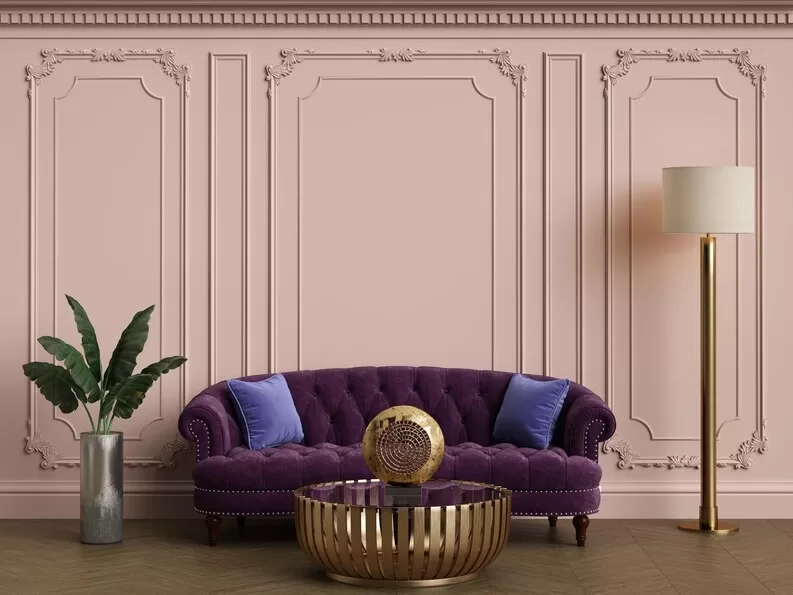

Conclusion
Traditional furniture holds a timeless appeal that transcends fleeting trends and continues to captivate homeowners and interior design enthusiasts. Throughout this article, we have explored the origins, key characteristics, popular styles, and integration possibilities of traditional furniture. As we conclude, let’s recap the enduring appeal of traditional furniture, appreciate the craftsmanship and history behind each piece, and encourage the exploration and embrace of traditional furniture in modern times.
A. Recap of the Enduring Appeal of Traditional Furniture
Traditional furniture has stood the test of time due to its inherent charm and elegance. It offers a sense of warmth, sophistication, and a connection to the past that many individuals seek to create in their homes. From the historical roots that span ancient civilizations to the diverse styles of English, French, and American traditional furniture, each piece carries a rich heritage and a unique story.
The enduring appeal of traditional furniture lies in its key characteristics. The use of wood as the primary material brings natural beauty and warmth to the pieces. Meticulous craftsmanship and handcrafted details add depth and intricacy. Classic shapes, graceful curves, and balanced proportions create a sense of timelessness. Ornamentation and embellishments, such as carvings, moldings, and inlays, showcase the artistry and attention to detail that defines traditional furniture. Upholstery and fabrics add comfort and luxury, elevating the overall aesthetic.
B. Appreciating the Craftsmanship and History behind Traditional Pieces
Traditional furniture is not merely an object of functionality; it is a work of art that reflects the craftsmanship and historical influences of its time. Each piece tells a story, embodying the skills and dedication of the artisans who crafted it. From the ancient civilizations that pioneered furniture making to the grandeur of the Baroque and Rococo periods, traditional furniture carries a rich heritage and cultural significance.
By appreciating the craftsmanship and history behind traditional furniture, we develop a deeper understanding and admiration for these remarkable pieces. The intricacy of the carvings, the precision of the joinery, and the artistry of the inlays and marquetry showcase the mastery of the craftsmen. Traditional furniture becomes more than just furniture; it becomes a tangible link to the past, preserving the traditions, aesthetics, and cultural values of previous generations.
C. Encouragement to Explore and Embrace Traditional Furniture in Modern Times
In today’s ever-evolving design landscape, the integration of traditional furniture into modern interiors offers a captivating and unique design approach. Blending the old and the new creates a harmonious juxtaposition, allowing traditional furniture to shine and adding depth and character to contemporary spaces. By following the tips for balancing traditional and contemporary elements, accessorizing with traditional accents, and creating cohesive design schemes, one can successfully integrate traditional furniture into modern interiors.
We encourage you to explore and embrace the beauty and versatility of traditional furniture in modern times. Whether you choose English Traditional with its Queen Anne and Georgian styles, French Traditional with the opulence of Louis XIV or the romantic elegance of Louis XV, or American Traditional with its Colonial or Shaker influences, traditional furniture offers a vast array of styles to suit various tastes and preferences.
By incorporating traditional furniture into your interior design, you create spaces that exude timeless elegance, sophistication, and a sense of connection to the past. Let traditional furniture be a source of inspiration, enabling you to create a home that reflects your appreciation for artistry, craftsmanship, and enduring beauty.
In conclusion, traditional furniture holds a special place in the world of interior design. Its timeless appeal, craftsmanship, and historical significance continue to enrich our homes and our lives. By understanding its origins, key characteristics, and integration possibilities, we can embark on a design journey that embraces the enduring allure of traditional furniture. Let traditional furniture become a cherished part of your interior aesthetic, creating spaces that exude elegance, sophistication, and a connection to the past.
FAQs (Frequently Asked Questions)
Here are answers to some frequently asked questions about traditional furniture:
Q1: Is traditional furniture expensive?
A1: The price of traditional furniture can vary depending on factors such as craftsmanship, materials used, and brand reputation. While some pieces can be quite luxurious and pricey, there are also more affordable options available that capture the essence of traditional design. It is possible to find traditional furniture at different price points to suit various budgets.
Q2: How can I mix traditional furniture with modern pieces without creating a conflicting look?
A2: To achieve a harmonious blend, consider using transitional pieces that bridge the gap between traditional and modern styles. Pay attention to color schemes, textures, and proportions, ensuring that they complement each other. For example, pair a traditional wooden dining table with contemporary chairs upholstered in a sleek fabric. Experiment and trust your design instincts to create a cohesive and balanced space.
Q3: How can I preserve the beauty of traditional furniture?
A3: Regular cleaning and dusting are essential to prevent dirt buildup. Use furniture polish suitable for the wood type to restore its shine periodically. Protect your furniture from heat, moisture, and direct sunlight. Additionally, handle with care and avoid dragging or placing heavy objects on delicate surfaces. By following proper maintenance practices, you can preserve the beauty and longevity of traditional furniture.
Q4: Where can I find traditional furniture?
A4: Traditional furniture can be found in specialized furniture stores, antique shops, and online marketplaces. Additionally, furniture manufacturers and retailers often offer a variety of traditional designs to suit different tastes and budgets. Explore both physical and online avenues to find a wide range of options and sources for traditional furniture.
Q5: How can I incorporate traditional furniture into a small space?
A5: In small spaces, consider choosing smaller-scale traditional furniture pieces that fit the proportions of the room. Opt for multifunctional furniture that provides storage or has space-saving features. Avoid overcrowding the space and maintain a sense of openness by selecting furniture with clean lines and avoiding overly ornate or bulky designs. By being mindful of scale and proportion, traditional furniture can be successfully integrated into small spaces.

